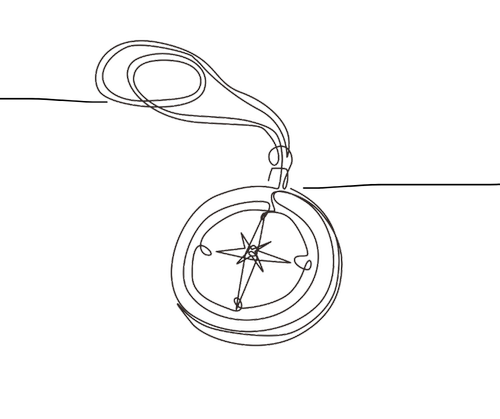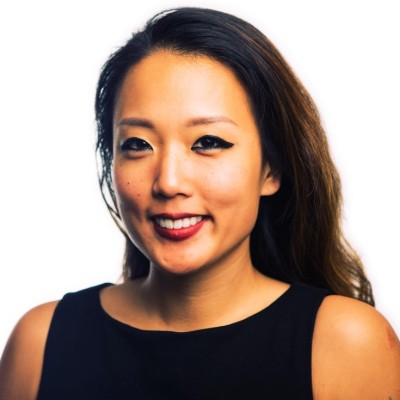The Why and How of Pre-Product User Interviews
Posted by: Team Outlander
Posted on 01/22/2022

Posted by: Team Outlander
Posted on 01/22/2022

Founders’ most frequent pain points arise from pushing product development without speaking to their current customers.
Initially, convincing founders to pause product development to conduct customer interviews is a tough sell. To them, it often feels like rendering their current ‘baby’ useless. But I know that ~40% of startups fail because they lack product-market fit, which means building something people actually want is the bare minimum.
Personally, I love talking to users because I find people endlessly fascinating. But, as a founder, I found that formalizing our user interview process enabled us to quantify and track metrics of success and inform how we built Levantr.
Before building your product, start with ethnographic customer interviews. These are often just called customer interviews, but I like adding the adjective ‘ethnographic’ to it because that’s exactly what you are doing! You are trying to observe the users in their natural environment and see how they usually circumvent or deal with the problem you are trying to solve.
Through these interviews, you’re trying to get a glimpse into how people behave and why, so you can create and test more accurate hypotheses about what your users actually want.
There is a difference between people who would use your product and people desperate for it. You must find the latter for your MVP because they will become your cult following.
To start, consider the following:
FIELD NOTES:
At my startup Levantr—a collaborative travel planner—our customer segment was obviously people who like traveling, which is… a majority of the global population. So, we narrowed it down to people who enjoy planning, i.e., the people who create color-coded, multi-tabbed spreadsheets and send you SurveyMonkey forms to rally the crew. Of course, we all know at least one person like that.
These Type-A travelers not only travel frequently but think about traveling all the time. What does that mean? They follow travel blogs and are active in FB groups. They were our cult.
First, look for interviewees on platforms like respondent.io, UserInterviews.com, and Askable. If your targets aren’t showing up on research platforms, try creating job postings asking your target profile to participate in a paid study or using social media platforms like LinkedIn to find target profiles to reach out to directly.
When offering money in exchange for interviews, you’ll inevitably attract some bad apples willing to lie to qualify for the study for the fee. However, you can weed them out using carefully crafted screener questions.
For example, here are some of the questions I used to screen Levantr interviewees:
FIELD NOTES:
Notice that #4 asks if they will show us their previous itinerary—this weeds out people who pretend to be active planners to qualify. I also ask how they usually get ideas to make sure we find people who think about travel frequently even if they are not traveling.
The last question is intentionally left open-ended to test how much detail they included. You want to find chatty interviewees who will quickly give you the most detailed insights.
Conducting interviews remotely is more accessible, cheaper, and allows you to record your sessions. Recording not only helps you stay focused on the conversation without having to take notes, but investors love to see footage from your user interviews. Plus, you are not limited geographically, which removes any local bias.
The #1 rule of user interviews is to never ask them what solution they want directly. Instead, focus on understanding their problems, how they approach them today, and, most importantly, why. Your job is to observe and ask users to elaborate when they say something interesting.
For example, here’s how we structured our 1-hour user interviews:
FIELD NOTES:
#3 is critical. It helps them travel back into a context relevant to your conversation and visualize the problem. Again, you’re triggering the emotions they felt during their last encounter, resulting in more accurate insights. This way, they’ll explain their process and show you how they perform the task.
Now that you collected your user feedback, you must decipher the implications and translate them into a product vision.
For example, here’s a list of steps I take to interpret interview insights while minimizing my own biases:
FIELD NOTES:
One of the recurring themes during Levantr’s pre-product ethnographic interviews was the importance of visuals in travel planning.
So, when we built the Levantr marketplace, we made sure that all the tiles/cards for our idea boards and itineraries included pictures. Plus, we knew that prioritizing the visual appeal of Levantr’s branding/marketing was critical to creating a sticky platform our customers love to use.
To close, I’ll leave you all with my favorite example of ethnographic interviews gone wrong: “The Pepsi Challenge.”
Pepsi had a campaign where people taste-tested Pepsi and Coke while blindfolded, then indicated their preference. And surprise, surprise, Pepsi was the winner. Meanwhile, Coke was extremely worried because their internal studies showed similar results. So, in response, they created ‘New Coke’ to mimic Pepsi’s sweeter taste and introduced it to the market with great confidence.
‘New Coke’ failed spectacularly, and Coke’s customers were pissed. But why?
The sip tests didn’t take into consideration the environment in which people drink Coke. People don’t take just one sip when drinking soda; they drink a whole can of Coke with a meal, at a sporting event, at the movies, etc. In the actual use-case contexts, people prefer the crisper taste of Coke over the saccharine sweetness of Pepsi or ‘New Coke’—except in small, sippable doses. The theory is that a home-use test would’ve yielded a very different outcome.
Coke recovered from the ‘New Coke’ fiasco because they’re a well-established brand with loyal customers and money allocated for trial-and-error product development. But startups don’t have the same luxury. That’s why investing a few hundred bucks now to talk to your target audience through a contextual inquiry.
So, what can founders learn from Coke? First and foremost, the quality of your user research will determine your ability to build the product of your target audiences’ dreams. How you ask your research questions matters: carefully consider your word choice and the context of both your interviewees and the problem you’re trying to solve. Finally, listen to your customers before rolling out a ‘New Coke’ product development that nobody wants.
For more expert advice on building and scaling your startup, check out our event library and Field Notes.

As we explore the unknown of each new investment, our Field Guides are where we document all that we learn along the way.
So, whether you’re actively raising, trying to break into VC, or interested in our game-changing portfolio, our Field Guide's got you covered.
Sign up now for exclusive access to funding opportunities, events/resources from our network of experts, updates from our portfolio, and more!
Join the Outlander pack for exclusive access to our network of industry experts, the latest from our portfolio, and more: